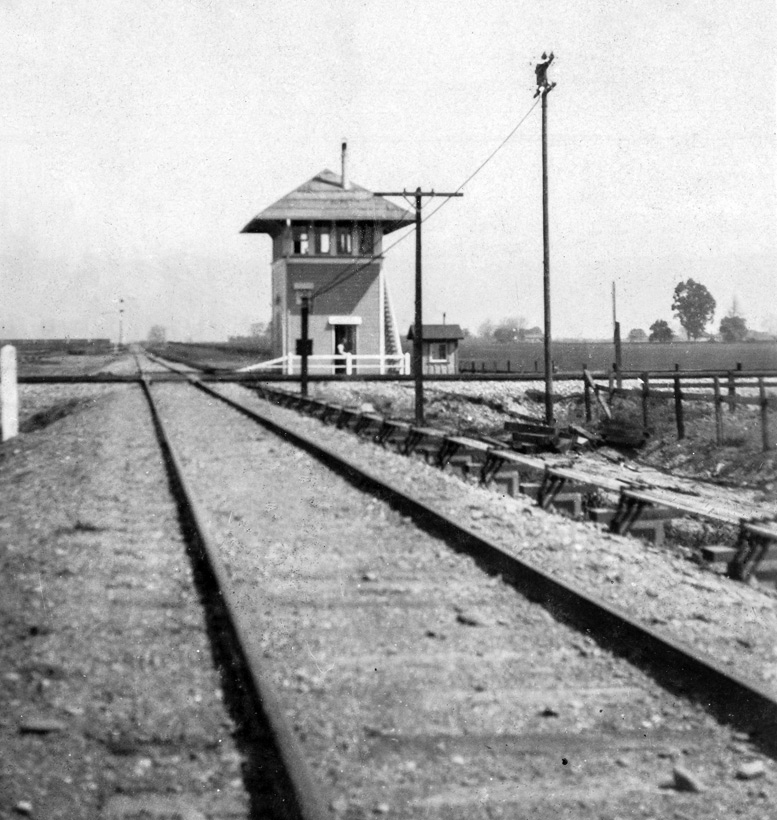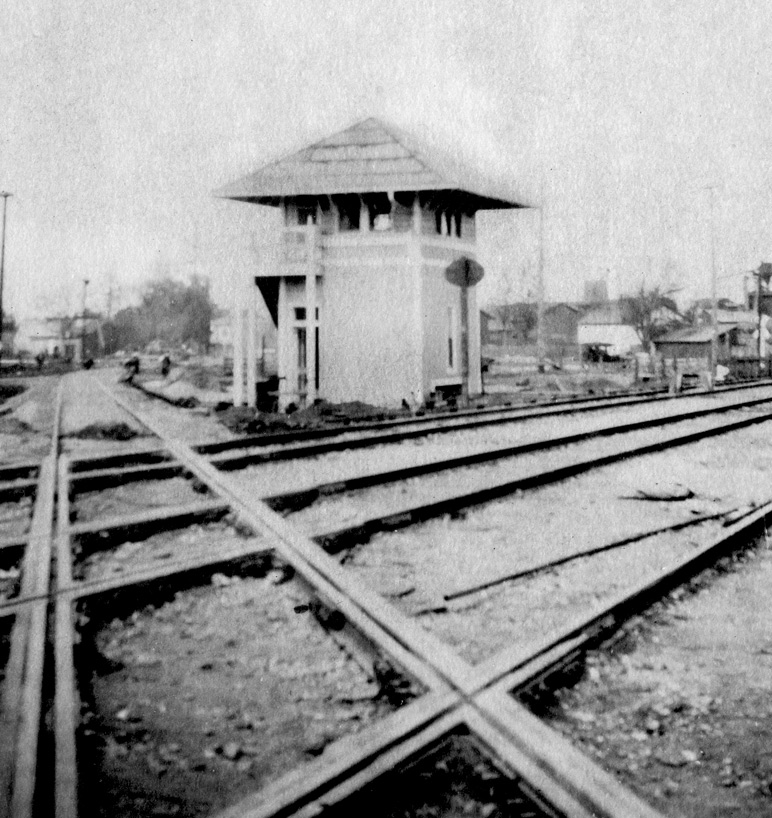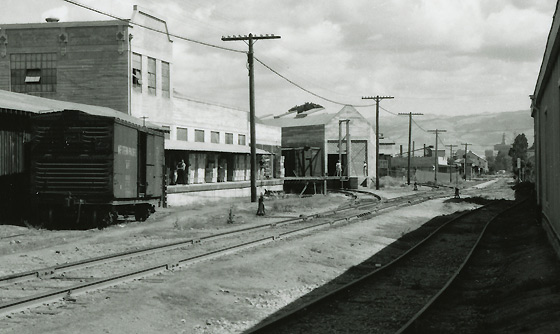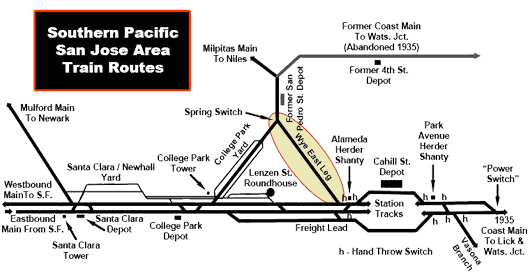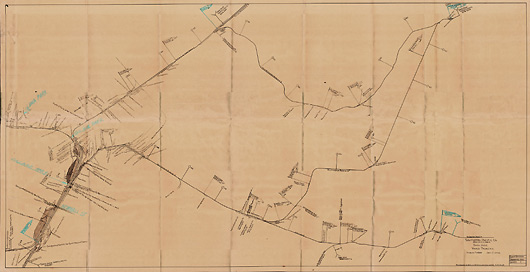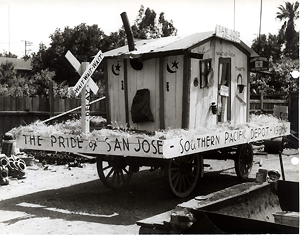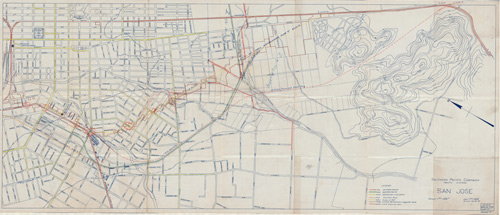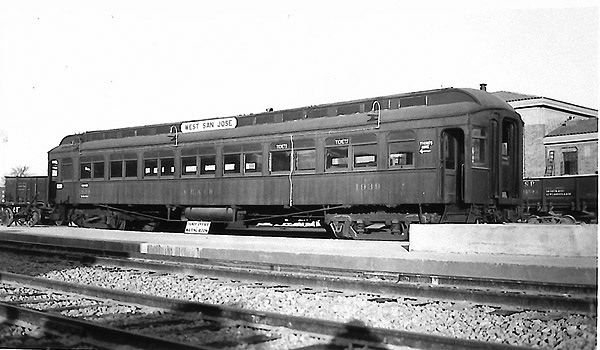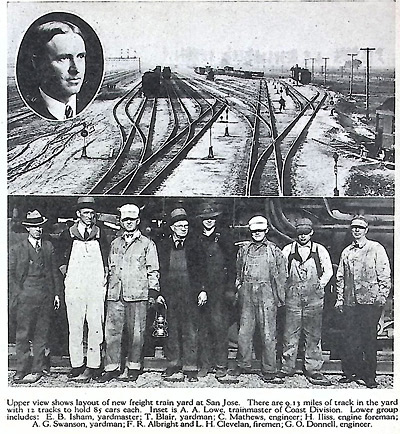|
SP San JosexxxxxSP Index
|
||
|
"The San Jose Line Change" The photo and map at below right appear in in J.R. Signor's Fall, 2023 Southern Pacific Historical & Technical Society Trainline article, "The San Jose Line Change". |
||
|
San Jose's "Other" Interlocking Towers |
Basset St., a.k.a. Market St., a.a.k.a. San Pedro St. (take your pick) Station |
|
|
Santa Clara Valley had six interlocking towers over the years. First, there were the well known and documented ones at College Park and Santa Clara, with the latter being preceeded by one located at the SPC crossing timetable east of the SP depot depot. At the time of the Forth Street line change on January 31, 1935, there were three additional towers: San Jose Tower immediately east of the Basset St. station; Western Pacific's West San Jose Tower which protected its crossing of SP's Santa Cruz main line; and Valbrick. which stood about a mile south of downtown.
above: Jeff Asay kindly forwarded these WP company images of its two towers as seen in The Iron Feather. At left is Valbrick Tower, looking eastward into wide open spaces along WP's line. In less than two decades from this circa 1925 photo, the area would become a jumble of warehouses and canneries. At right, the view looks westward up WP's single track in the direction of its (unseen) non-interlocked Peninsular Railway interurban crossing and finally, its West San Jose terminous fronting on The Alameda.. West San Jose Tower in situ Given that they only existed for about 15 years and prior to the proliferation of railfan photographers, it is understandable that photos of WP's two San Jose towers are rare. Photos of both appear in The Iron Rooster, and here is another one that we were thrilled to discover at the Shasta Division Archives,...** The photo looks up the Santa Cruz main line (now Vasona Branch) towards downtown from the corner of Race Street and Morepark Avenue (behind photographer), between the United States Products Corporation cannery on the left and the Contadina Canning Company's tomato cannery. In the distance the tower sits to the lower left of San Jose's first high rise, the 1925-built Bank of Italy (later, America) building that stood as a beacon for travelers until taller buildings began to obscure it in the later part of the 20th Century. The photo dates to 1931 and probably was recorded by an SP company photographer following a grade crossing accident. This image was cropped from a wider view. ...** but not for the reason you think. At first we did not even notice the tower sitting in the distance. Instead, it was the foreground that excited us. The location is on the Santa Cruz main line (now Vasona Branch) at the corner of Race Street and Morepark Avenue (behind photographer), between the United States Products Corporation cannery on the left (where Staff spent several college summers working on the fruit processing lines; also aluded to in Steinbeck's The Grapes of Wrath) and Contadina Canning Company's tomato cannery. You local readers of advancing years may recognize the spur where the WP boxcar sits as where Corn Products Corporation corn syrup laden tank cars promenently sat until the operation closed in the early 1980's.
It used to be that nothing larger than a mikadoo or a pacific could turn end-for-end within the Santa Clara Valley, as San Jose Roundhouse's 80 foot (or less, earlier on) turntable was the only thing available. Prior to the time of the West Side relocation, this was not such pressing inconvenience that SP felt compelled to remedy the situation, for The Valley was "hog" country where diminuative engines thrived. Likewise, freight trains off of the Milpitas Line (along with those from/to the Mulford Lines) all yarded at Newhall to exchange between Western and Coast Division crews, meaning that no wye was needed at San Jose Tower to connect them to the Coast Division. The same held true once the new line went into service. The east leg did not host Milpitas freights for its first several decades, until an interdivisional pool union agreement created Oakland-Watsonville Pool 4. |
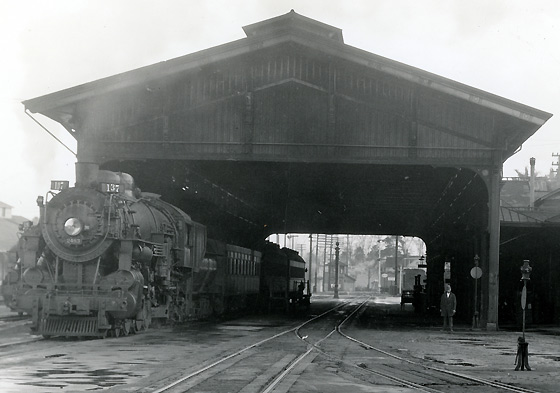 |C.M. Kurtz, SP Lines photo - Shasta Division Archives The Basset St. - a.k.a. Market St., a.a.k.a. San Pedro St. (take your pick) station** - was literally in its last days when C.M. Kutz snapped this photo on december 12, 1935, but what really intrigues Wx4 is what was framed by the shed opening: an rare image of San Jose Tower. The (1700 pixel) full photo is here, while a (1700 pixel) larger version of the above cropped image is here. The thumbnail map below links to an enlarged, full version of the one appearing in the article, whose purpose seems to be to designate yard limits and union agreement points concerning pay for operating employees. Note that yard limits extended all the way to Los Gatos and New Almaden. This was a recent development on the latter after the long-time weekly mixed train was discontinued in favor of "as-needed" service by yard crews. Also note the short squiggle of Penninsular Ry. tracks leading to Luna Park at top left. The team tracks (just west of the old San Jose Flea Market on Berryessa Road) were served by SP until the 1980's.
Above are the 1925 permutations of SP's plans that ultimately were superseded by yet another version by the time that construction began at the end of the decade. In particular, the depot layout (upper right) is much more grandiose than what was actually constructed. The map at left shows three routes that were proposed over the years, but there were others. The final alignment opened in 1935 very generally followed Route #1 south from the new depot for a short distance around Willow Glen, but then struck directly for Route #3 and Lick.
above: A suburban coach served as a temporary West San Jose Depot while the grounds were torn up.
(Click on the image for a larger version - C.M. Kurtz, SP Lines photo, Shasta Division Archives) SP contemplated moving its Coast Division main line away from downtown San Jose's Fourth Street from time to time over the course of more than four decades before construction began , even though executives had settled upon a general plan early on: A new depot located at the South Pacific Coast yard would replace the Bassett Street depot, and from there the relocated main line would thread through the vicinity of Willow Glen to a junction with the Fourth Street line...somewhere. The goals: no more fielding of irate letters by people marooned on the wrong side of Fourth Street during rush hour, along with higher speed track not inhibited by sharing the street face to face with pedestrians and vehicular traffic. |
|
|
Seen here is Santa Clara Valley's other big SP event of the era, the 1927 opening of the "new [San Jose] yard", which took over as the arrival-departure yard from overloaded College Park Yard, which itself had been dubbed the "new yard" after roughly two decades of augmenting the tiny "old yard" adjacent to Bassett Street Depot. Among others in the photo is Yardmaster Earl B. Isham, who hired out in 1902 as one of several generations of Ishams that worked San Jose's yards. Charley C. "Pop" Mathews was promoted to engineer in 1920, and much later had San Francisco's Mission Bay [roundhouse] Gardens renamed in his honor when he retired in 1949. Lyle H. Cleveland hired out as a fireman in 1925, but had to wait out the Depression to gain promotion to engineer in 1941. Wx4 has a PDF of his collected 1940-1962 time books, and Wx4 hosted Ernie Kiesel Collection of Southern Pacific Photographs has additional photos of all three gentlemen. |
||
|
The flip side of the new San Jose Station
Southern Pacific invested a considerable amount of brain power, not to mention expense, on arranging the station area "just so". As we see in this 1928 drawing, the company was originally inclined towards a layout that was a mirror image of the final design, plus a separate express house that did not make the final cut. Thus, when all was done, it was a minor architectural masterpiece...and an operational headache, for it was built on the wrong side of the tracks. |
||
